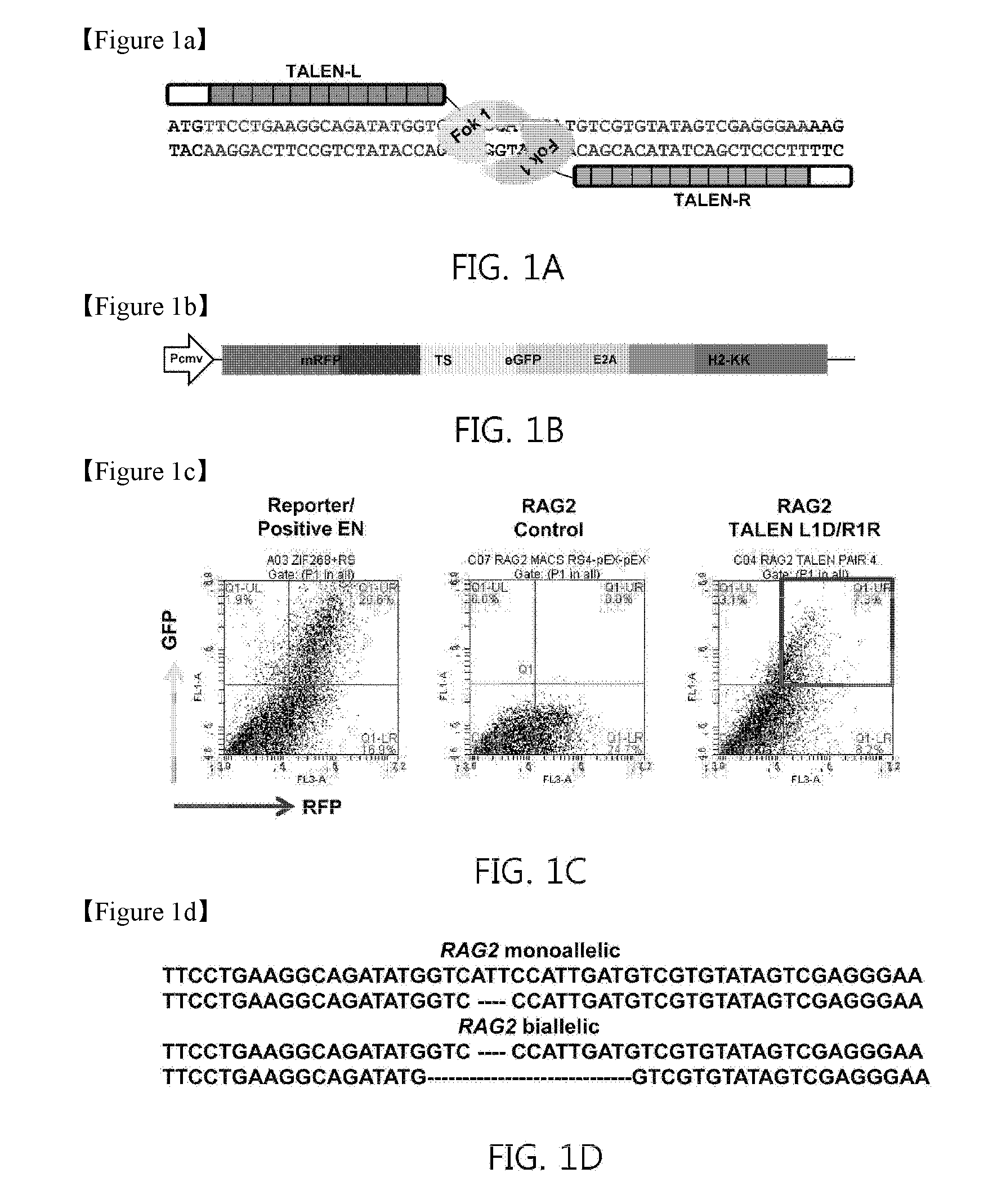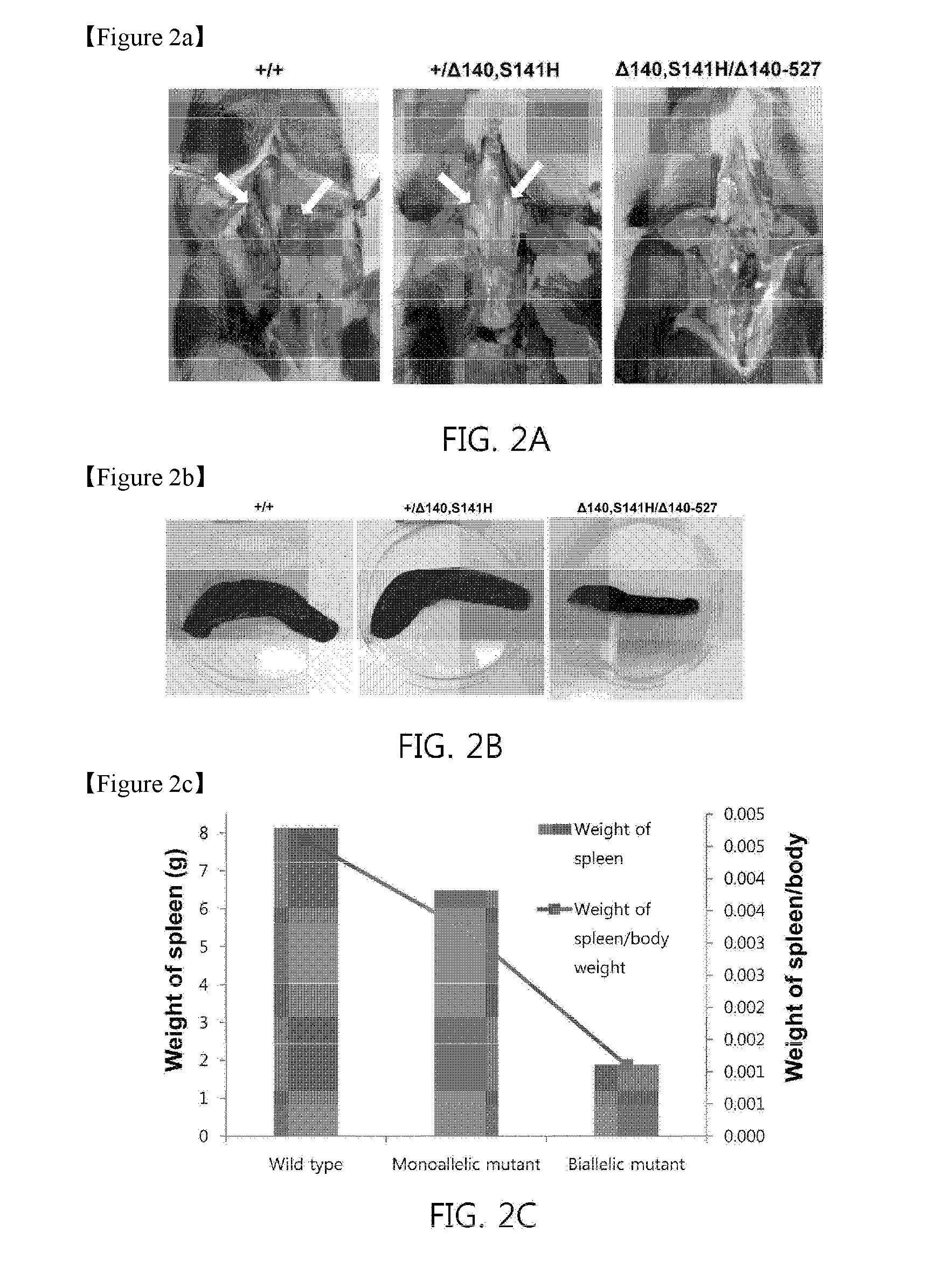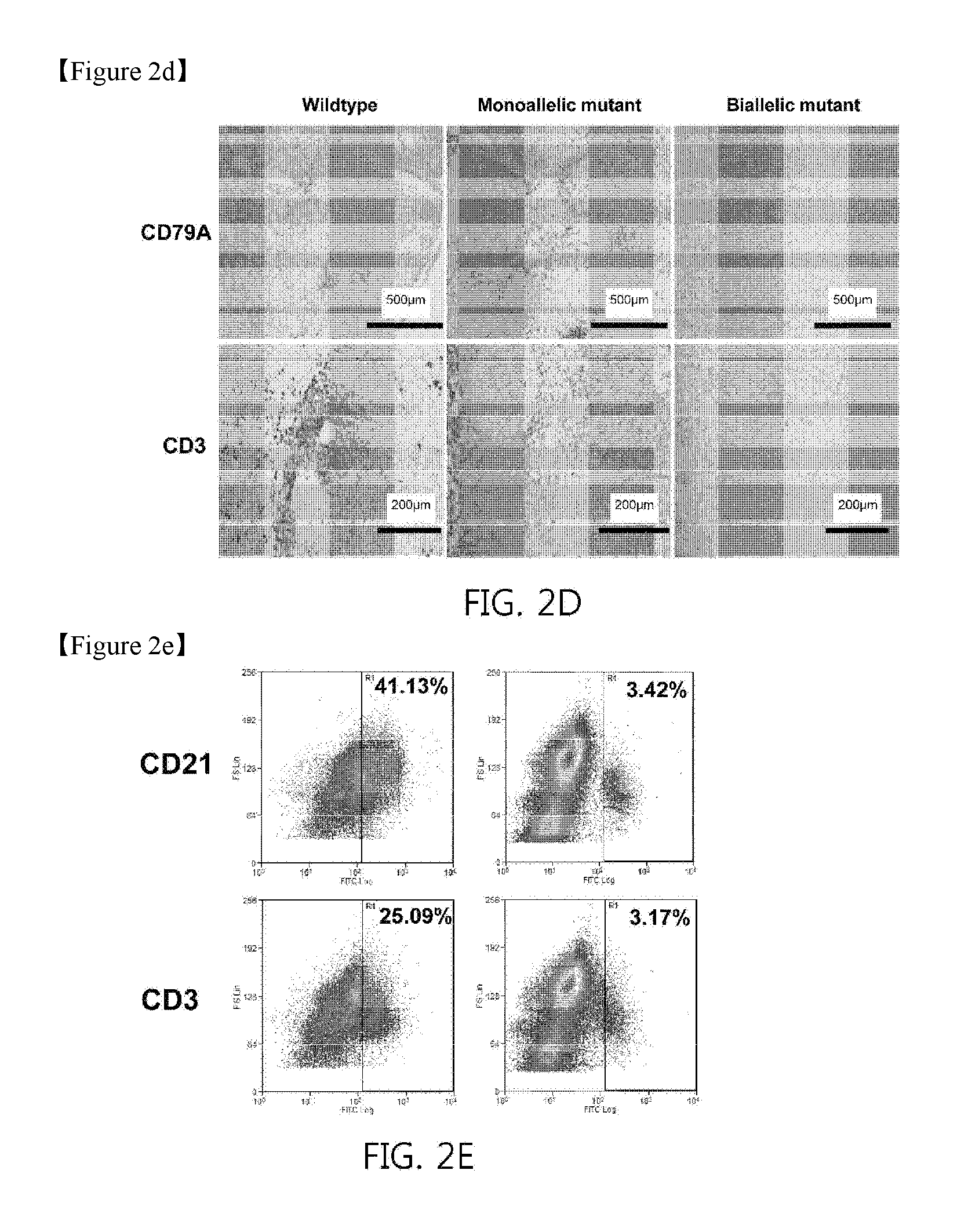Recombination activating gene 2 gene targeting vector, production of scid-like miniature pigs by talen-mediated gene targeting and use thereof
- Summary
- Abstract
- Description
- Claims
- Application Information
AI Technical Summary
Benefits of technology
Problems solved by technology
Method used
Image
Examples
example 2
Somatic Cell Nuclear Transplantation
[0053]To produce SCNT embryos, sow-derived oocytes were purchased from ART (Madison, Wis.). The oocytes were shipped overnight in maturation medium (TCM199 with 2.9 mM Hepes, 5 μg / ml insulin, 10 ng / ml EGF, 0.5 μg / ml p-FSH, 0.91 mM pyruvate, 0.5 mM cysteine, 10% porcine follicular fluid, 25 ng / ml gentamicin) and transferred into fresh medium after 24 hours. After 40-42 hour of maturation, cumulus cells were removed from the oocytes by vortexing in the presence of 0.1% hyaluronidase. During manipulation, oocytes were placed in the manipulation medium supplemented with 7.0 μg / ml cytochalasin B. The polar body along with a portion of the adjacent cytoplasm, presumably containing the metaphase II plate, was removed and a donor cell was placed in the perivitelline space using a thin glass capillary. The reconstructed embryos were then fused in a fusion medium (0.3 M mannitol, 0.1 mM CaCl2, 0.1 mM MgCl2, 0.5 mM Hepes) by two DC pulses (1-sec interval) at...
example 3
Immunohistochemistry (IHC)
[0054]For IHC, tissues fixed in neutral buffer with 10% formalin were used. The tissues were embedded on slides for IHC. Endogenous peroxidase activity was first blocked in 3% hydrogen peroxidase. Samples were pretreated with Borg Decloaker, and then blocked in background Sniper solution. After washing, samples were incubated with primary antibodies either specific for B cells (CD79A; Diagnostic Biosystems—#Mob118, 1:100) or T cells (CD3; DAKO—#A0452, 1:400). After the incubation, samples were washed and incubated with HRP conjugated secondary antibodies. Samples were then stained with Romulin Red Chromogens to visualize the signal. Samples were also stained with IP FLX Hematoxylin to provide backgrounds. The Borg, Sniper, Romulin Red and IP FLX hematoxylin were all purchased from Biocare (Concord, Calif.). All photomicrographs were acquired using a Zeiss Axiophot microscope (Carl Zeiss, Oberkochen, Germany) equipped with an Olympus DP70 high-resolution dig...
example 4
[0055]Portions of the spleen from freshly euthanized wildtype and biallelic piglets were collected into RPMI-1640 medium (Mediatech, Inc., Manassas, Va.) supplemented with 10% fetal bovine serum, minced with a scalpel blade, aspirated multiple times through a 20 ga. needle, and then forced through a 70 m nylon mesh cell strainer (BD Biosciences, San Jose, Calif.). The splenocyte suspension was then incubated for 15 minutes with Pharm Lyse solution (BD Biosciences) to lyse erythrocytes and then pelleted at 200×g for five minutes. After discarding the supernatant, the pellet was resuspended in cold staining buffer (BD Pharmingen) and cells were counted on a hemacytometer. Cells were then divided into aliquots of 5×106 cells in 200 μL staining buffer. The FITC-attached mouse anti-pig CD21, mouse anti-pig CD 3ε, and mouse anti T-2 mycotoxin IgGlk (Isotype control group) (SouthemBiotech, Birmingham, Ala.) were added to the cells to be 0.5 μg / 1×106 cells, and then, cultured ...
PUM
| Property | Measurement | Unit |
|---|---|---|
| Recombination enthalpy | aaaaa | aaaaa |
Abstract
Description
Claims
Application Information
 Login to view more
Login to view more - R&D Engineer
- R&D Manager
- IP Professional
- Industry Leading Data Capabilities
- Powerful AI technology
- Patent DNA Extraction
Browse by: Latest US Patents, China's latest patents, Technical Efficacy Thesaurus, Application Domain, Technology Topic.
© 2024 PatSnap. All rights reserved.Legal|Privacy policy|Modern Slavery Act Transparency Statement|Sitemap



